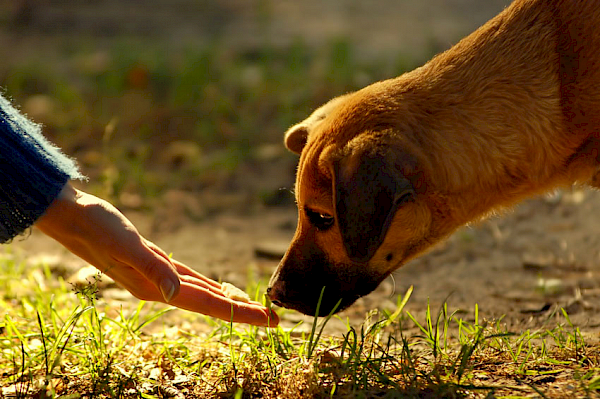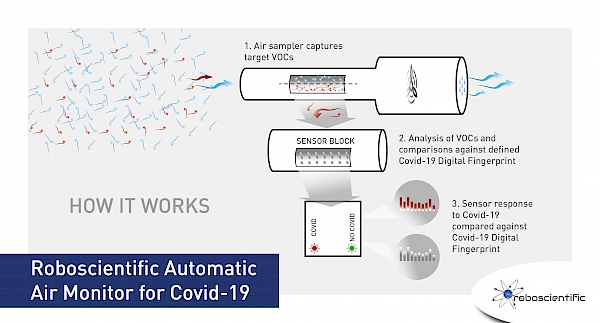Covid-19
- Applications
- Covid-19
- Poultry
- Dairy Cows
- Pigs
- Salad Crops
- Vegetables
Automatic, non-invasive, fast and affordable Covid-19 detection
Roboscientific is finalising its Covid-19 Room Monitor. This affordable unit can be installed into indoor environments where it will 'sniff' the air looking for the Volatile Organic Compound Digital Fingerprint associated with the disease. The Fingerprint is created by the odours created by metabolic changes to the sufferers caused by the SARS-CoV-2 virus and detected as changes to their VOC output (how they smell). The VOC Digital fingerprint is present even in asymptomatic sufferers, so this new screening system should solve the problem of disease transmission by people who have no indication they are infected.
The Covid-19 Air Monitor will be installed into a room and take air samples at regular intervals which it will automatically test to see if anyone present is infected with Covid-19 . The air sampling will need to take place in a closed room for 15-30 minutes. If the Covid Digital Fingerprint is found, the Monitor will automatically alert the designated person via SMS or wi-fi; who can then isolate the inhabitants of that room and arrange for individual tests to be given to identify who in that space has the infection.
Roboscientific is also developing an individual test, which uses the same technology to test the breath of individuals and check whether they are infected with Covid-19. This test also takes place in real-time using an automated device and from taking the breath sample to delivering the result should be a matter of minutes.
Like a dogs nose, the Roboscientific Monitor is highly sensitive and will recognise the presence of the Fingerprint in tiny proportions - its proprietary sensors are a new generation of VOC sensing technology and a marriage between electronic stimulation and the sensor materials used - all of which have been developed by Roboscientific.
In recent trials, led by researchers from the London School of Hygiene & Tropical Medicine (LSHTM), with Durham University, the study tested Roboscientific's VOC sensing to establish its value as a COVID-19 screening tool.
Over two days of testing samples of clothing worn by infected and non-infected people, the researchers found the sensors were able to distinguish between infected and uninfected samples, demonstrating that SARS-CoV-2 infection has a distinct odour. On the first day of testing they achieved an average of 98% specificity (meaning a low risk of false positive results) and an average of 99% sensitivity (meaning a low risk of false negative results).
On the second day of testing the sensors achieved 100% sensitivity and specificity, suggesting they can detect the presence of COVID-19 infection more accurately than any other diagnostic test available.
From these results, it is expected that the air sampling for VOCs emitted into the air from Covid-19 infected people will be able to spot them with a similarly high degree of accuracy.
This will all be done automatically without any disruption to the inhabitants or anyone having to act as tester. There is no individual cost associated with this test as it happens automatically within the machine, which is programmed to recallibrate itself at the end of each monitoring cycle ready for the next test.
Individual testing from breath samples should also achieve the same success rate - delivering a much more reliable result from the simple collection of a breath test and instant analysis - the whole process being completed in minutes.


